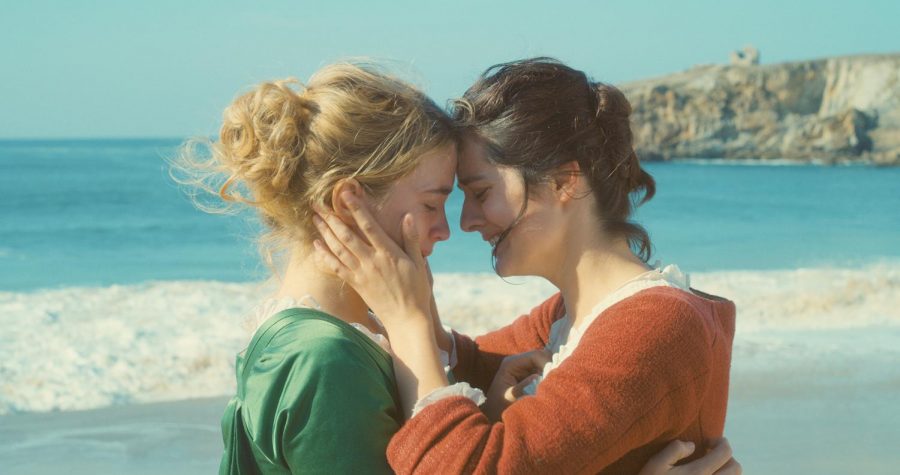‘Portrait of a Lady on Fire’ is a dazzling, poignant masterpiece
Movie Review: ‘Portrait of a Lady on Fire’
DISCLAIMER: CONTAINS MILD SPOILERS
“Portrait of a Lady on Fire” is a period piece.
Many elements considered typical in a period romance are found in the film. There are corsets and the occasional hoop skirt. Orpheus and his star-crossed lover Eurydice are invoked. There are longing glances and closeups of crying faces set to the music of Vivaldi. But to take these elements at their surface value and label this film a typical costume drama would do a grave disservice to the brilliant filmmaking of director Céline Sciamma. Sciamma has taken these elements and depicted a romance that feels at once timeless and contemporary, aspirational yet cautionary.
“Portrait,” which opened in select cities on Valentine’s Day, follows Marianne (Noémie Merlant), a painter in 18th century France, who is commissioned to paint a portrait of an enigmatic mistress named Héloïse (an unforgettable Adèle Haenel) to be sent to her intended fiancé in Milan. Héloïse, who objects to the marriage, has proven herself to be a difficult subject in past attempts; the last artist who tried resigned before he even saw her face, exhausted by her unwillingness to comply. Héloïse’s mother (Valeria Golino) hires Marianne on the condition that she work on the portrait in secret, under the guise of providing a walking companion for Héloïse, who is mourning her sister from a possible suicide. Through the painting process and aided by their daily promenades, a deep bond forms between Marianne and Héloïse, slowly evolving into a passionate and tender love affair.
Great emphasis is placed on the word “slowly.” There is no tactile evidence of romance between Marianne and Héloïse until well into its two-hour run time. In a less admirable film, this fact may make it sound quaint, even cowardly. But while “Portrait” is at times subdued, it pulls no punches. Throughout the first half, Sciamma displays a mastery in illustrating romance as subtext, making the clear romantic tension between them feel palpable while remaining intangible.
When their love for each other is finally mutually acknowledged, it is treated with the sensitive but bold hand of Sciamma, resulting in some of the most achingly beautiful sequences I’ve seen on film. The impressive work of cinematographer Claire Mathon provides a dazzling visual backdrop throughout. The film revolves around the creation of a painting; indeed, virtually every shot could hang in a museum.
In more classical (read: trite) stories of lovers—star-crossed or otherwise—there usually exists between our heroes a series of predetermined, unchangeable obstacles. Race, class, familial rivalry or any combination of the above create unequal balances of power which conspire against the two lovers, culminating in either a well-earned victory over the odds or a tragic defeat. Here, these obstacles are if not removed then intentionally unexplored; even the well-worn trope of an artist and their muse, employed effectively in many fine films, here resists assuming the role of a tension-building plot device. The artist-muse dynamic is the circumstance that brings Marianne and Héloïse together but is not a wedge driving them apart. (Nor is their sexual orientation.) Sciamma’s script seems entirely disinterested in inventing any distance between Marianne and Héloïse that they don’t create for themselves, leaving only the social mores and expectations of their surroundings and their own agency in deciding whether to subvert or conform to them.
Stylish but not shallow, sophisticated but not fussy, Sciamma has crafted an exquisite exploration of love and romance. Gorgeously shot and marvelously acted, “Portrait of a Lady on Fire” is a slow—but singularly worthwhile—burn.
The Exponent is looking for financial contributions to support our staff and our newsroom in producing high-quality, well-reported and accurate journalism. Thank you for taking the time to consider supporting our student journalists.












































